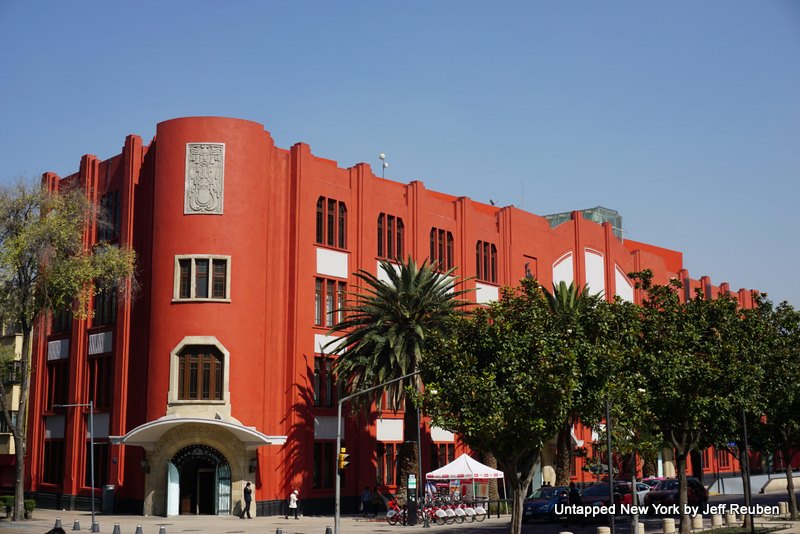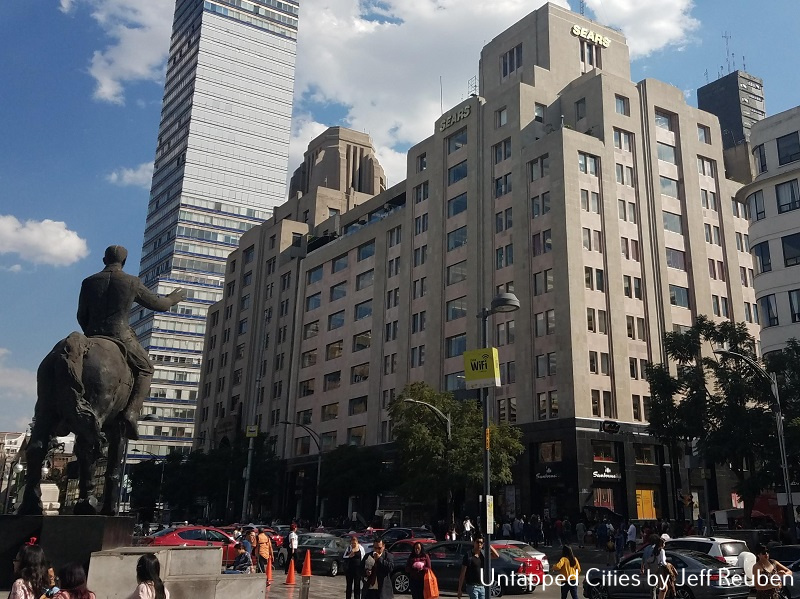
At Untapped Cities, we’re bringing back a semi-regular column of explorations outside of New York City shared by our very own writers on their travels around the country and the world. In honor of Cinco de Mayo, our long-time writer Jeff Reuben shares about his favorite Art Deco buildings he discovered in Mexico City.
Ready for a tour of outstanding Art Deco architecture featuring sleek lines, stylized artwork, sensuous curves, and even an earful of jazz? For this retro journey we’re not headed to New York, or even Miami, but further south to Mexico City where a collection of beautiful buildings provide insights into the Mexican capital’s past and present.
Following the Mexican Revolution of the 1910s, during 1920s through 1940s Mexico City was growing and the spirit of the times called for architectural alternatives to historical revival styles. Art Deco fit the bill.
Known for its geometric forms, as represented by Parisian theaters and New York skyscrapers, Art Deco symbolized machine age modernity. But it also incorporated artistic themes from early civilizations, including Mexico’s Aztecs and Mayans. This combination aligned with post-revolutionary aspirations to define Mexico as a progressive nation proud of its pre-Columbian heritage.
There are hundreds of Art Deco buildings in Mexico City, with the greatest concentration in Hipódromo, a neighborhood built on the site of a former horse racetrack. Whether you are planning a trip to Mexico City or just seeking a vicarious thrill, check out these ten treasures we’ve picked from across the city to illustrate the diversity and beauty of Mex Deco.
1. Edificio La Nacional

We start in the Historic Center, an area with buildings dating as far back as the 1500s and ruins that are even older, where architect Manuel Ortiz Monasterio built the 13-story Edificio La Nacional in 1932. It was Mexico City’s first skyscraper and first building engineered to resist earthquakes and Monasterio modeled it on American precedents.
Given its location and high visibility, many criticized it for lacking a traditional Mexican character. However, following the example of Art Deco towers in New York and Chicago, it features ziggurat setbacks at the upper levels, a building form matching the stepped pyramids of the Mexico’s pre-Hispanic civilizations. So, in fact, La Nacional was not so foreign after all.
The building next door, on the right in the photo above, was built about 1949 as an expansion with a matching form. It is known as La Nacional II or Edificio Sears, after its current occupant.





